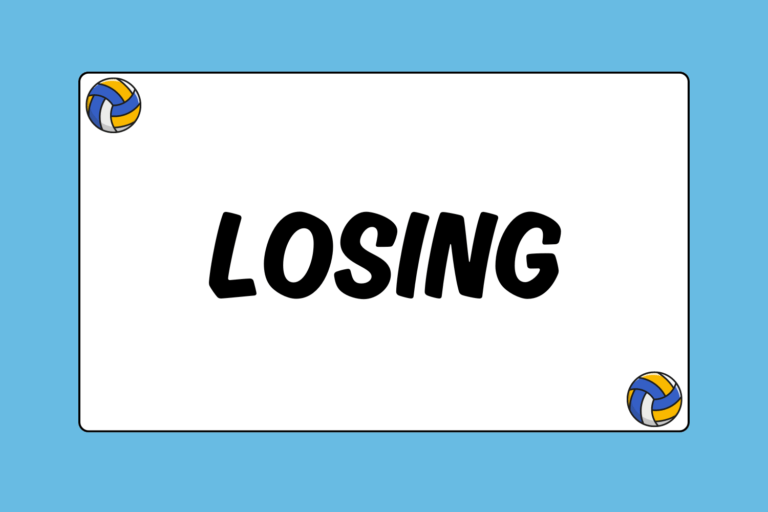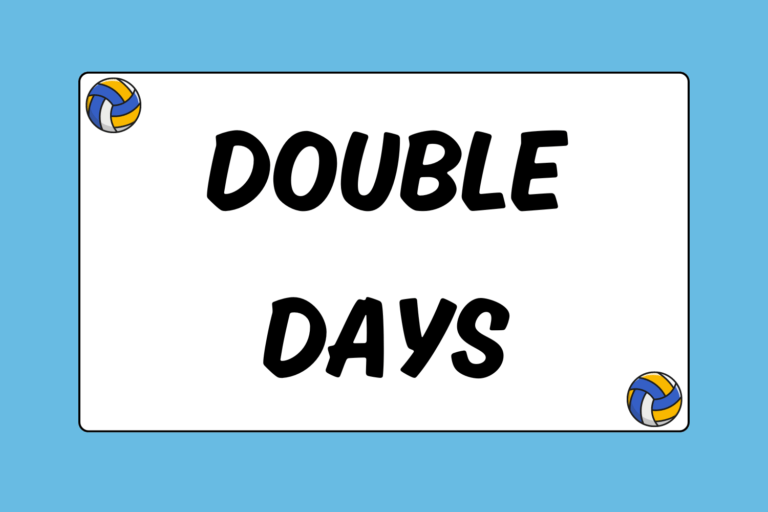Reading the NCAA recruiting guidelines can be as tedious as watching paint dry. And the opaque language of the official rule book can be confusing to say the least. That being said, here is a general breakdown of the recruiting process and a recruiting timetable to help you and your family effectively prepare for the world of college volleyball recruiting.
Recruiting Lingo
The recruiting process can be rather wordy and confusing. Here’s a list of some of the more common terms related to the recruiting process:
- Contact: Any time a coach has any face-to-face meeting with an athlete or his/her parents off the college’s campus.
- Contact period: The period in which coaches are allowed to have in-person contact with the athlete or their parents.
- Dead period: The time in which coaches are not permitted to have in-person contact with athletes or parents.
- Evaluation period:During this time, a college coach may watch you play or visit your high school, but cannot have any in-person conversations with the athlete or parents off their college campus.
- National letter of intent:Official contract signed by an athlete to commit to a college. This is a binding contract.
- Official visit: Any visit to a college campus by you and your parents, paid for by the college.
- Prospective student athlete (PSA): According to the NCAA, an athlete becomes a PSA when: 1) He/she starts ninth-grade classes; or 2) A college gives an athlete any financial aid or other benefits that the college does not generally provide to most students.
- Unofficial visit: Any visit by an athlete and his/her parents to a college campus paid for by the athlete or their parents.
- Verbal commitment: A college-bound athlete’s commitment to a school before he or she signs (or is able to sign) a National Letter of Intent. This commitment is not binding.
Freshman Year
The most important thing a high school freshman hoping to play college volleyball can do is not focus on college recruiting. Despite the fact that the start of freshman year marks an athlete’s official inauguration as a “prospective student athlete,” the amount of contact a college coach can have during freshman year is extremely limited. The National Collegiate Athletic Association, the official governing body for college athletics in the United States, has many restrictions to protect the student athlete.
Freshman year is stressful enough without the added burden of obsessing about recruiting. Also, there are few (if any) freshmen who are mature enough to make such an important decision. The best thing a freshman can do to increase the chances of being recruited in the future is to focus on improving. Joining a club team is an excellent way to ensure that you will continue to play and improve during the offseason.
Here is a summary of what the NCAA guidelines allow freshman year:
- Questionnaires: Schools are allowed to send out questionnaires to prospective student athletes requesting more information about the player.
- Camp brochures:Schools are allowed to send out brochures for any skills camps or clinics. Many colleges hold camps on campus during the summer. This is an excellent opportunity to visit the campus and get a feel for the coaching staff while still improving your skills.
- Telephone calls: You may make calls to a college coach at your expense, but coaches may not call you.
- Unofficial visit: An unofficial visit can be defined as any trip athletes make to a college campus at their own expense. The NCAA does not limit the number of unofficial visits an athlete may take during the recruiting process.
Mental Edge:
The college questionnaire has become increasingly popular as a way for college teams to gather information for their database. However, it is not a sign that you are being seriously recruited by a given school. While it’s certainly nice to receive an introduction letter or questionnaire, you can’t put too much stock in them because college coaches don’t. Don’t let a piece of paper, or lack of one, spoil what should be a relaxed time in your volleyball life.
Sophomore Year
Sophomore year means it’s time to slightly turn up the intensity. Even though you are a year older, the NCAA still views you, in terms of restrictions, much in the same way they view freshmen. So the amount of contact you can have with a coach is still limited. However, what you can do is make sure you are giving yourself the best opportunity to be seen by college coaches. This means that if you haven’t joined a juniors club team yet, then it’s time to seriously consider doing so. Due to the fact that the high school season runs the same time as the college season, the majority of recruiting is done during the offseason or the club season.
A player who has a strong desire to play in college should seek out a roster spot on a club team that attends national tournaments. Coaches prefer to recruit at national events, because it allows them watch elite players from all over the country in one place and it gives them an opportunity to evaluate a player as they compete against other elite athletes. The team search page on this site, along with the guide on “Choosing a Volleyball Club,” are helpful resources.
Once you have secured a spot on a club team and have a copy of your tournament schedule, it’s time to send out brief introduction letters to colleges. Your letter should include your basic contact information along with the position you play and your tournament schedule. There are several acceptable formats for your letter and you should choose the format that is most comfortable for you. For a more detailed breakdown of the introduction letter, see the guide “How to Write a College Recruiting Letter.”
The NCAA regulations for a sophomore in high school are the same as they are for a freshman.
Junior Year
Junior year of high school is generally regarded as the most crucial period of the recruiting process. The NCAA greatly expands the amount of contact coaches can have with prospective student athletes during this important time. That being said, the athlete should have a recruiting plan in place before the start of the school year.
A good recruiting plan will save time and help you keep track of which schools have expressed interest. There are several important dates to keep in mind when composing your recruiting plan. So if you would like some assistance feel free to reference our guide on the topic.
Once you have a solid recruiting plan in place, the next thing to focus on is playing your best throughout the club season. There are hundreds of coaches at some of the national tournaments, so playing hard always is the best way to ensure that a coach sees you at your best. As the club season progresses, colleges will begin to recruit athletes more seriously. By March of that year, some schools may extend scholarship offers to players that they feel can help their program. If June rolls around and you still have not had much contact with the schools you targeted in your recruiting plan, it’s time to evaluate your situation.
Here is the summary of what the NCAA allows during an athlete’s junior year of high school:
- Recruiting materials:College coaches may begin sending out recruiting materials (school brochures or letters expressing interest) September 1.
- Telephone calls: After July 1, coaches may call prospective student athletes, but no more than once a week.
- Off-campus contact: Coaches are allowed a limited number of off-campus contacts with athletes after July 1.
- Unofficial visits: Athletes can make an unlimited number of unofficial visits to schools.
Senior Year
The start of senior year means the recruiting marathon is nearing completion. By the time you are a senior, you should have a short list of potential schools.
The only difference between an athlete’s senior year and the junior year is that an athlete is allowed to go on official visits during their last year of high school. Beginning the first day of classes, you are eligible for an official visit. You are limited to one official visit per college up to a maximum of five official visits to Division I and II colleges.
If the official visits are being made, then you are certainly on your way to becoming a collegiate athlete. However, if you are not quite there, be sure to follow all of these steps. That way, you’ll have the easiest time with your recruiting process.





